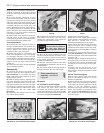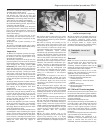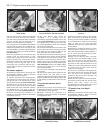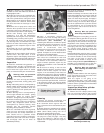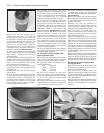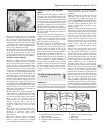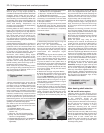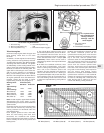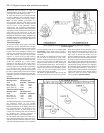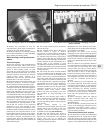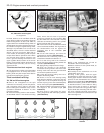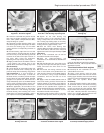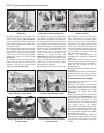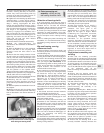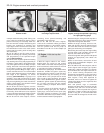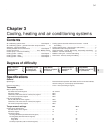
10 Repeat this procedure so that the
required bearing shell grade is obtained for
each of the five main bearing journals.
11 Seek the advice of your Peugeot dealer
on parts availability, and on the best course of
action when ordering new bearing shells.
Note: On early models, at overhaul it is
recommended that the later bearing shell
arrangement is fitted. This, however, should
only be done if the lubrication system
components are upgraded (necessitating
replacement of the oil pump relief valve piston
and spring, as well as the pump sprocket and
drive chain) at the same time. If the new
bearing arrangement is to be used without
uprating the lubrication system, Peugeot state
that Blue (Class A) lower bearing shells should
be fitted. Refer to your Peugeot dealer for
further information.
TU series engines
12 As with the XU series engines described
previously, the TU aluminium block engine
originally had upper and lower bearing shells
of the same thickness, with only two sets of
bearing shell sizes available; standard and
oversize. On aluminium block engines from
mid-1993 onwards, and all cast-iron block
engines, to ensure that the main bearing
running clearance can be accurately set, there
are three different grades of bearing shell. The
grades are indicated by a colour-coding
marked on the edge of each shell, which
denotes the shell’s thickness, as listed in the
following table. The upper shell on all bearings
is of the same size (class B, colour code
black), and the running clearance is controlled
by fitting a lower bearing shell of the required
thickness. This later arrangement should also,
if possible, be fitted to earlier engines during
overhaul.
Aluminium block engine
Bearing colour Thickness (mm)
code Standard Undersize
Blue (class A) 1.823 1.973
Black (class B) 1.835 1.985
Green (class C) 1.848 1.998
Cast-iron block engine
Bearing colour Thickness (mm)
code Standard Undersize
Blue (class A) 1.844 1.994
Black (class B) 1.858 2.008
Green (class C) 1.869 2.019
13 New bearing shells can be selected using
the reference marks on the cylinder
block/crankcase. The cylinder block marks
identify the diameter of the bearing bores and
the crankshaft marks, the diameter of the
crankshaft journals. On early engines, the
correct size of bearing shell must be selected
by measuring the running clearance as
described under the sub-heading below.
14 The cylinder block reference marks are on
the right-hand (timing belt) end of the block,
and the crankshaft reference marks are on the
right-hand (timing belt) end of the crankshaft,
on the right-hand web of No 4 crankpin (see
illustration). These marks can be used to
select bearing shells of the required thickness
as follows.
15 On both the crankshaft and block there
are two lines of identification: a bar code,
which is used by Peugeot during production,
and a row of five letters. The first letter in the
sequence refers to the size of No 1 bearing (at
the flywheel/driveplate end). The last letter in
the sequence (which is followed by an arrow)
refers to the size of No 5 main bearing. These
marks can be used to select the required
bearing shell grade as follows.
16 Obtain the identification letter of both the
relevant crankshaft journal and the cylinder
block bearing bore. Noting that the cylinder
block letters are listed across the top of the
chart, and the crankshaft letters down the
side, trace a vertical line down from the
relevant cylinder block letter, and a horizontal
line across from the relevant crankshaft letter,
and find the point at which both lines cross.
This crossover point will indicate the grade of
lower bearing shell required to give the correct
main bearing running clearance. For example,
the illustration shows cylinder block reference
G, and crankshaft reference T, crossing at a
point within the area of Class A, indicating that
a blue-coded (Class A) lower bearing shell is
required to give the correct main bearing
running clearance (see illustration).
2D•18 Engine removal and overhaul procedures
13.14 Cylinder block and crankshaft main bearing reference markings -
TU series engines
13.16 Main bearing shell selection chart - TU series engines



